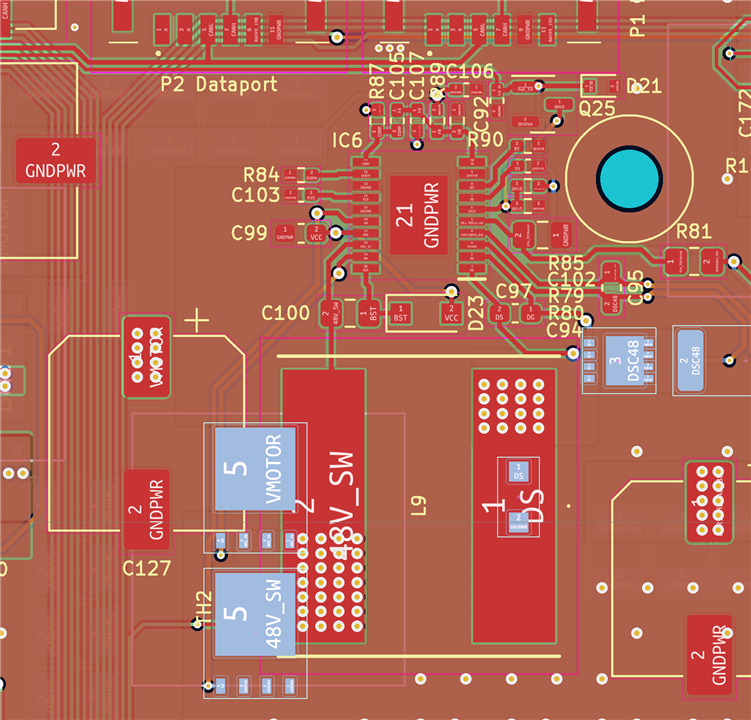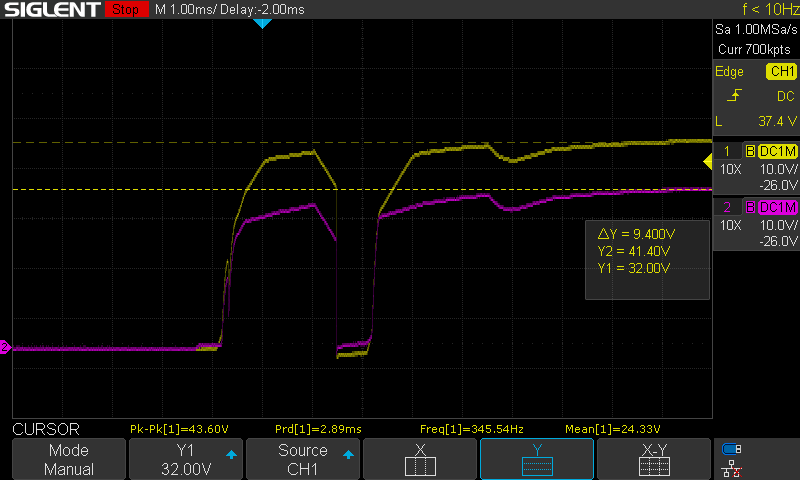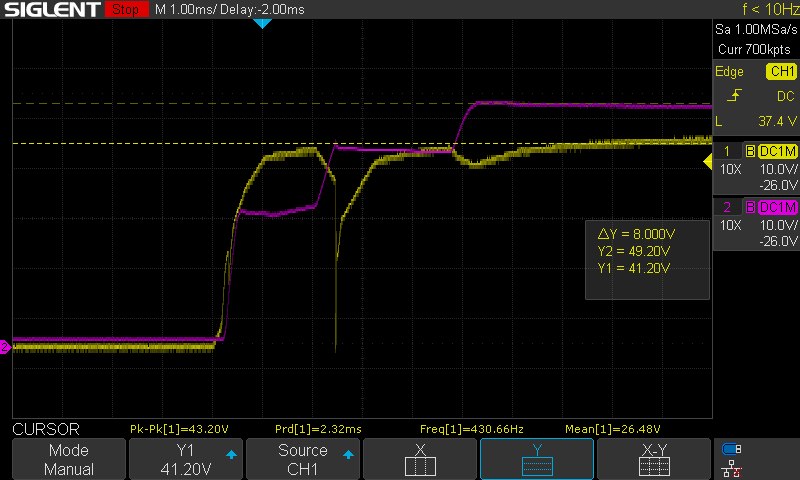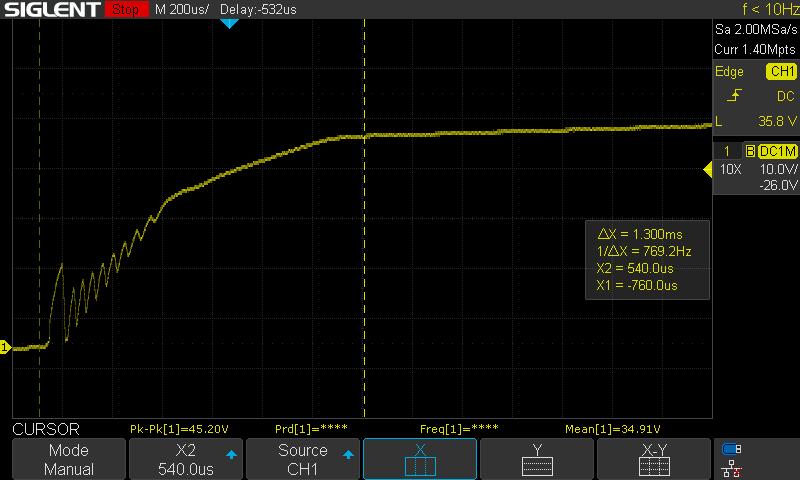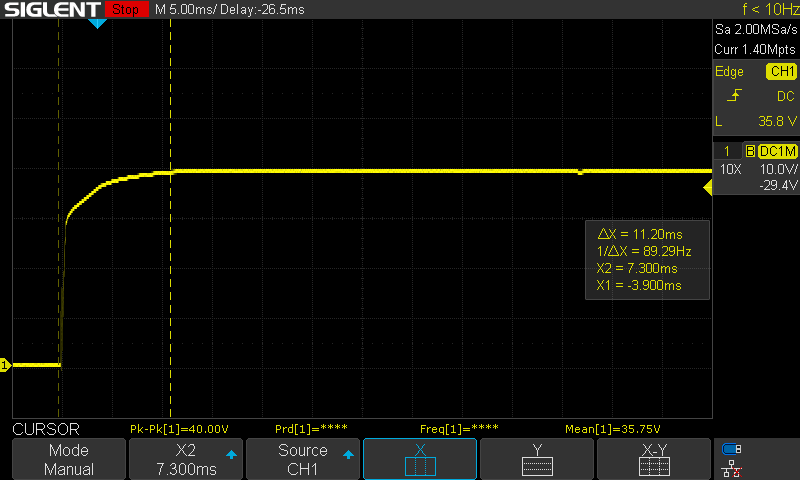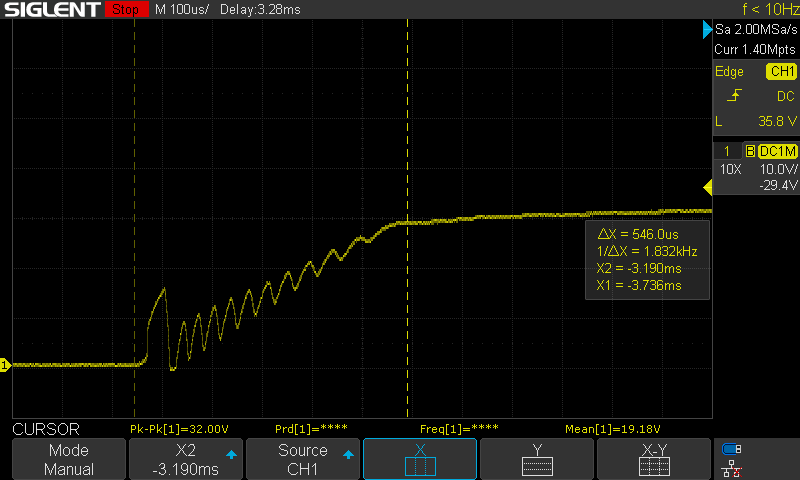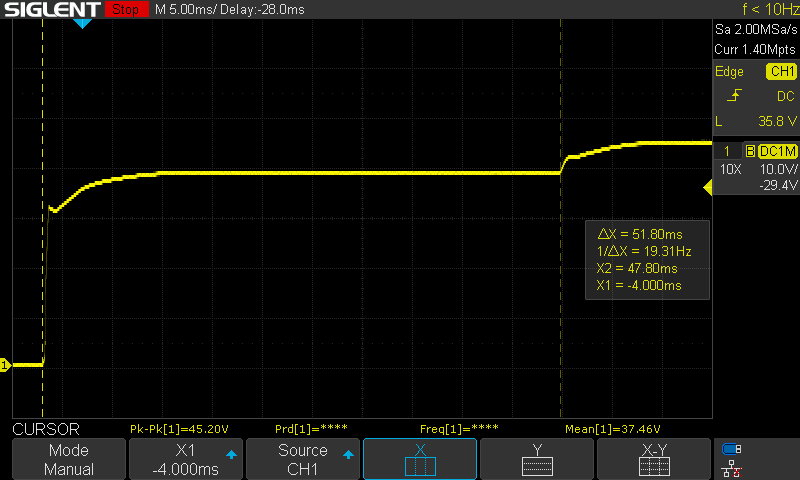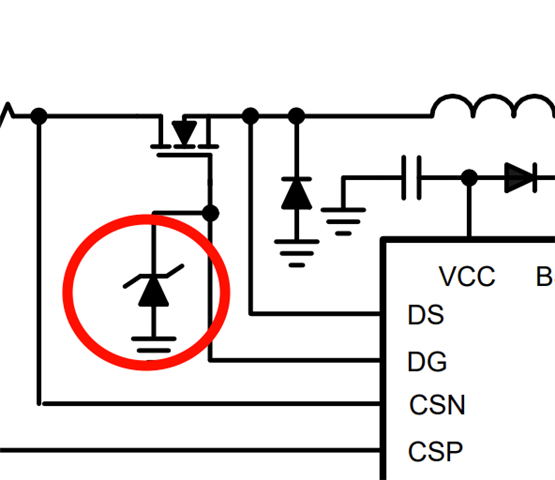Hello,
I have an issue where the low side FET and the disconnect FET are occasionally failing short circuit on startup of the regulator.
My circuit consists of the standard application schematic LM5121 configured for ~48V output voltage stepping up from a voltage range of 25V-42V.
The regulator is enabled/disabled through the use of a logic level FET that pulls the UVLO pin to ground.
The disconnect FET used is the PXN012-60QL, and the switching FETs are ISC230N10NM6ATMA1.
The purpose of this regulator is to power a stepper motor driver and power a PoE switch, with what I estimate is an additional ~300uF of extra load capacitance on top of what is shown in the schematic attached.
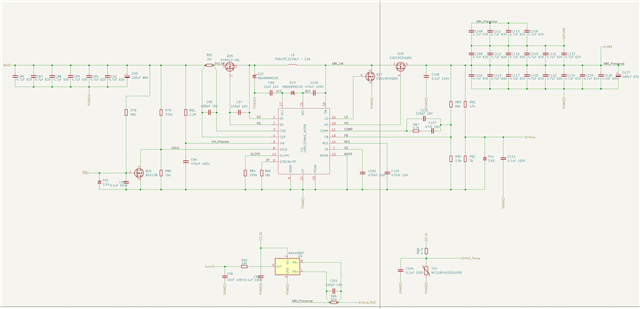
The stepper driver does not immediately start on power up, so the load on the output should be mostly passive.
Any help is appreciated.
Thanks,
K
Edit:
Adding the local relevant layout where the regulator is. The net VMOTOR is the output rail.
